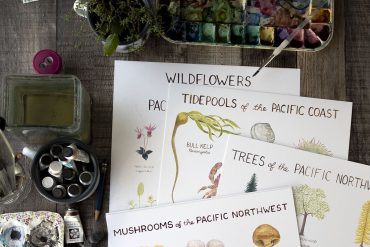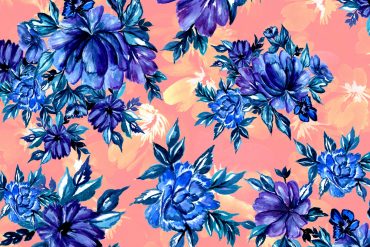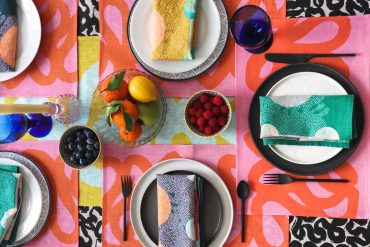I am pleased to announce that Julie Gibbons of tractorgirl will be joining Pattern Observer as a regular contributor! Julie will be covering textile and surface design history and we are honored to have her on the team.
Julie is an Australian artist and maker in jewellery and textiles, and has a PhD in Fine Arts. She is besotted with all things art/craft/design, and writes about these things and more on her blog tractorgirl. She is a dreamer and a lover of space, and lives on a farm near Wagga Wagga.
I hope that you had an inspiring weekend and enjoy Julie’s post on Russia and the October Revolution. -Michelle
Surface design is affected by so much more than ‘what-you-like’ and ‘fashion’. It’s an absolute melting pot of the prevailing zeitgeist, a mixture of the cultural aesthetics and even political influences. Textile production in Russia in the early 20th Century is a case in point. Fundamentally affected by the October 1917 Revolution, surface design shifted rapidly from traditional florals and plant motifs to abstracts and geometrics.
The Revolution was indeed revolutionary – the Tsarist system had been overthrown and the bourgeoisie was removed from power. It was the perfect opportunity to reshape culture, and Lenin’s slogan “Art Belongs to the People” allowed artists the freedom to rethink their roles.
Hampered by a floundering economy and continuing political turmoil in Russia and abroad, efforts to nationalise and industrialise the (until then) fragmented cottage clothing industry were slow. When the New Economic Policy was put in place in 1921, Russia opened its borders allowing ideas to filter through from elsewhere in Europe. Textile production started to improve, moving away from the old, pre-revolution printing plates with their folk-style plant motifs.
All image credits – from the book Soviet Costume and Textiles 1917-1945, by Tatiana Strizhenova
Russian Constructivism had as its core principle “production art” – that is, art with a social meaning and practical purpose, and several artists turned their talents to repeats for textiles and graphic design, and away from the realm of ‘pure’ art. Champions of this period of textile design included Liubov Popova, Varvara Stepanova, and her husband Alexandr Rodchenko, who was already famous in his own right as a painter, graphic designer of posters and magazines, and as a theatre designer.
All image credits – from the book Soviet Costume and Textiles 1917-1945, by Tatiana Strizhenova, except bottom left, from the Tate Gallery, http://tate.org.uk
Their crisp, geometric designs drew heavily on their easel experiments in formal geometric composition. Sharply contrasting colours and complex criss-crossing lines and shapes in a flat plane were a wholesale rejection of traditional forms; they embraced the new, and these ‘ideal’ aesthetics were intended to uplift the masses. The new designs featured mostly non-objective forms, but occasionally included abstracted forms of industrial machinery – cogs, wheels, levers – as well as new symbols such as the hammer and sickle.
All image credits – from the book Soviet Costume and Textiles 1917-1945, by Tatiana Strizhenova
Julie Gibbons is a contemporary craft and surface design junkie, and writes about these things and more on her own blog, http://tractorgirl.com.au. She is also a maker of many things.















